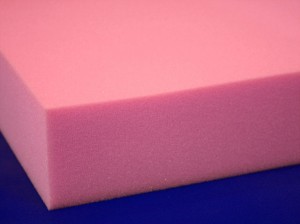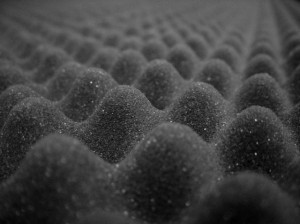For industries that require materials on a large scale, consistency and quality are two of the most important considerations when thousands or even millions of products are being impacted by a batch of materials. This is important not only for one order, but as more and more orders are placed over time, each set of materials is expected to perform to the same specifications as the previous ones, and all orders that follow. To ensure the uniformity of materials when consistency is important, industry standards have been established as a way to blend the quality control and categorization of materials.

There are many different standards in place, depending on business location and what services and materials are being used or manufactured. As one of the largest and most demanding organizations in the world, the United States Department of Defense (DOD) has their own set of standards for the materials they require. These standards specify the numerous requirements that certain products must meet to fill a role in the DOD’s regimented system. MIL-PRF-26514 and A-A-59135 are two such requirement listings that pertain to rigid or flexible foam product packing materials.
While often referred to as generic standards, there are variances in these specifications that cover different requirements for required products. MIL-PRF-26514 and A-A-59135 are foam performance specifications. This means that they detail the functional performance requirements and guidelines for that specific material or product, as opposed to technical requirements that are covered by other regulation types.
Since the importance of material qualities and the quantity being ordered is great, these standards can help even the casual reader understand the characteristics of a product.
MIL-PRF-26514 refers to polyurethane foam sheet materials, the majority of which are also known as open-cell foam, whereas A-A-59135 describes polyethylene foam, which is closed-cell foam. There are two types of these foams included in this performance specification; Type I foam, which is standard polyurethane foam, and Type III, which is anti-static foam. A Type II classification did exist, but recent revisions have eliminated this variety of classification, and for the sake of reference consistency, Types I and III remained as they were.
After Type is specified, there are then two Classes under each variety. This tiered breakdown is common in standards, regardless of the industry, because it provides black and white answers to product questions. Class 1 materials are rigid foams which can be thought of as non-resilient materials. An example is flower foam, which holds its shape but will compress and cave to pressure and maintain the imprint left in it after the release of pressure. Class 2 materials are flexible foams, which are the traditional foam materials you think of being used in couch cushions that compress for comfort, but return to shape after the release of pressure. The performance standard also includes stipulations for the classification categories. For example, Class 2 materials have a limitation on the amount of compression creep that can occur in the material.

The final stipulation in these materials is Grade. These are broken into color segments, depending on the Type of material selected. Type I standard foam’s Grade A material is blue or white, Grade B is green, and Grade C is a standard charcoal foam. For Type III anti-static foam, Grade A material is yellow, Grade B is red or pink, and Grade C brown.
Having this sort of regimented structure makes the purchasing process easier for both the buyer and the seller of foam packaging by reducing margin for error. A material either does or does not qualify for a type, class, or grade. This not only keeps materials that don’t meet specification from intentionally being sold, it also prevents the accidental sale of a material that isn’t a certain specification, saving both parties the time, trouble and money. Coding also allows easier storage and inventory, as it’s easy to classify stock according to the standard as well. If someone requests Type I, Class 2, Grade C Material, you can know exactly what they mean (standard, flexible, charcoal polyurethane foam) and where to find it, taking potential confusion out of the transaction.
This article is a summary of an in-depth military performance specification, intended only to give readers a general overview of a highly-detailed document. It does not cover every aspect of the specification and should not be treated as such. There are many performance and engineering requirements within the standard that must also be met before a material is fully compliant. It should also be noted that Foam Factory’s foam has not been tested for military specifications, so we are only able to suggest the products we carry that would be closest to the requested milspec.
—
Type I – Standard
Type II – N/A
Type III – Anti-Static
Class 1 – Rigid (Typically, Polyethylene Foam)
Class 2 – Flexible (Typically, Solid Charcoal Regular Foam)
(Type I) Grade A – White/Blue
(Type I) Grade B – Green
(Type I) Grade C – Charcoal
(Type III) Grade A – Yellow
(Type III) Grade B – Red/Pink
(Type III) Grade C – Brown
Stress curves can also be a factor in Grades.

